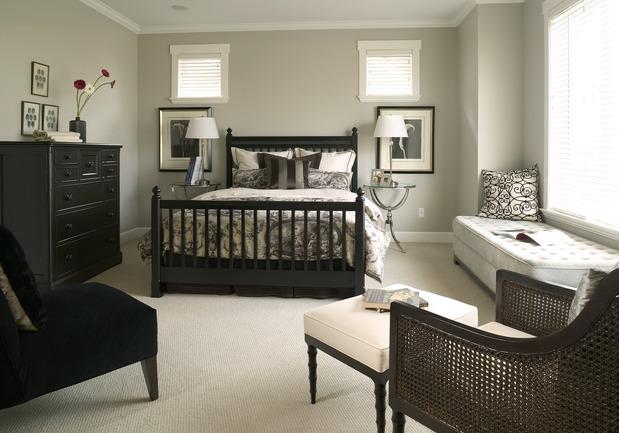
Often, flooring is the first thing people notice when they enter a home. It’s the largest surface area in the house and since you’re in constant contact with it, floors are quickly scrutinized by guests and potential homebuyers. So when your carpet doesn’t look good, it’s almost guaranteed to reflect poorly on your reputation for housekeeping. If your carpeting is faded, discolored, stained, or simply an undesirable color, you should refurbish it. What if your carpet is in good shape but looks horrible? It’s a waste of money to replace an already quality pile. Often, carpet dyeing is the best way to restore and the most economical.
Faded Carpet: Replace or Dye?
There are several factors that will increase the wisdom of choosing carpet dyeing to refresh the look of your carpet. High-quality carpet, less than ten years old, rarely demands replacement carpeting. Maybe the carpet is almost brand new but somehow appears old and abused. Many times carpeting isn’t worn down, torn up, or coming apart, but still looks like it needs to be replaced. How does it happen? It could be that you have kids careless with the Kool-Aid, or a dog being potty trained, or maybe the sun is simply having its way with your fibers.
Carpet dyeing experts are able to apply a new color to the fibers or cover up blemishes to match the preexisting shade. A quick dye job is an easy and efficient way to restore old carpeting without the additional expense: On average, carpet dyeing is a third the cost of carpet replacement ($586 vs. $1,683). That said, the process isn’t the answer for every carpet. Some carpeting may not last more than another year or two, whether you dye it or not. Some carpet needs stretching or cut-and-plug repair for isolated stains. You should talk to an experienced carpet professional before you make any final decisions about your carpet.
Carpet Dyeing Concepts
It isn’t like painting a piece of wood; you can’t just cover up the imperfections. In fact, carpet dyeing specialists are trained in color coordination concepts. Unlike other home renovations, you don’t want this project to be seen or admired; you want it to appear natural and seamless. Therefore, professionals use unique techniques and supplies so the dye remains invisible to the naked eye.
- Spot Control: Unless they’re caused by bleach, stains usually aren’t perfectly white. Instead, they’re typically a pinkish hue due to sun-fade or spills. Therefore, to gain back the original color of the fabric the stain has to be offset by a counteracting color, which takes a lot of training, specific knowledge, and expert application.
- Re-Coloring: If you want to recolor, you need to understand that if your original carpeting is yellow and you want it brown, you have to compensate by using dyes of an opposite shade. Also, be aware you can’t tint it a lighter color, you can only go darker.
- Safety Supplies: Certified technicians only use products that are safe for the environment, children, and pets. Plus, these dyes instantly colorfast to the fibers and cannot be rubbed, walked, or vacuumed off, assuring a lifelong result.
Rug Dyeing
Most contractors are also capable of rug dyeing. Since area rugs are meant to be a focal point, it’s important they don’t appear shabby or ragged. But new rugs are sometimes just as expensive as nice carpeting, so though seriously damaged mats may be beyond repair, minor defects can sometimes be concealed. But rug dyeing isn’t just covering up spots; a skilled technician can also replicate Oriental rug designs or create their own intricate borders and patterns.
Ready to start your carpet dyeing?
Find ProsThe Dye Guys
When you dye your hair, most people prefer to call on experts for consultation and application. So why not do the same for your floors? There are do-it-yourself pressure sprayers on the market, but sometimes these machines create uneven coatings, over-saturation of the padding, or additional staining. However, qualified professionals come with their own heavy-duty scrubbers (they look like a giant vacuums), which apply deep, even layers. Plus, it’s smart to consult the experts beforehand since some fibers can’t be re-colored (polyester, polypropylene, and acrylic).
So when contacting the authorities, give them an idea of what to expect: the size (square footage) of the project, the pile of the preexisting product (Berber, cut, plush), the overall color scheme of your home, and any special accommodations they’ll need to consider (stairs, furniture, appliances, baseboards). Many times they’ll even come to your house and give you a free inspection, demonstration, and estimate of the project before beginning any type of renovation.
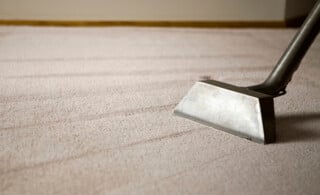 Is Your Carpet Cleaner Good for Your Health and the Environment?
Is Your Carpet Cleaner Good for Your Health and the Environment? 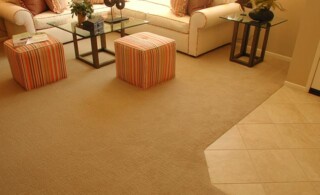 Carpet Ratings – Do They Matter?
Carpet Ratings – Do They Matter?  How to Remove Pet Odor From Your Carpets
How to Remove Pet Odor From Your Carpets 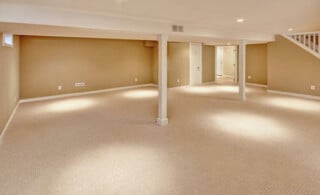 Berber Carpets
Berber Carpets 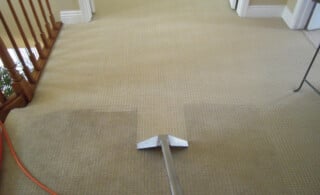 Carpet Care Tips
Carpet Care Tips 

Where do I find a professional to change the color of our carpeting.
This sounds like an incredible solution to 4 different carpet colors in one house!!
Would love to have a professional see if it’s even possible..